Small milkweed bug (Lygaeus kalmii)
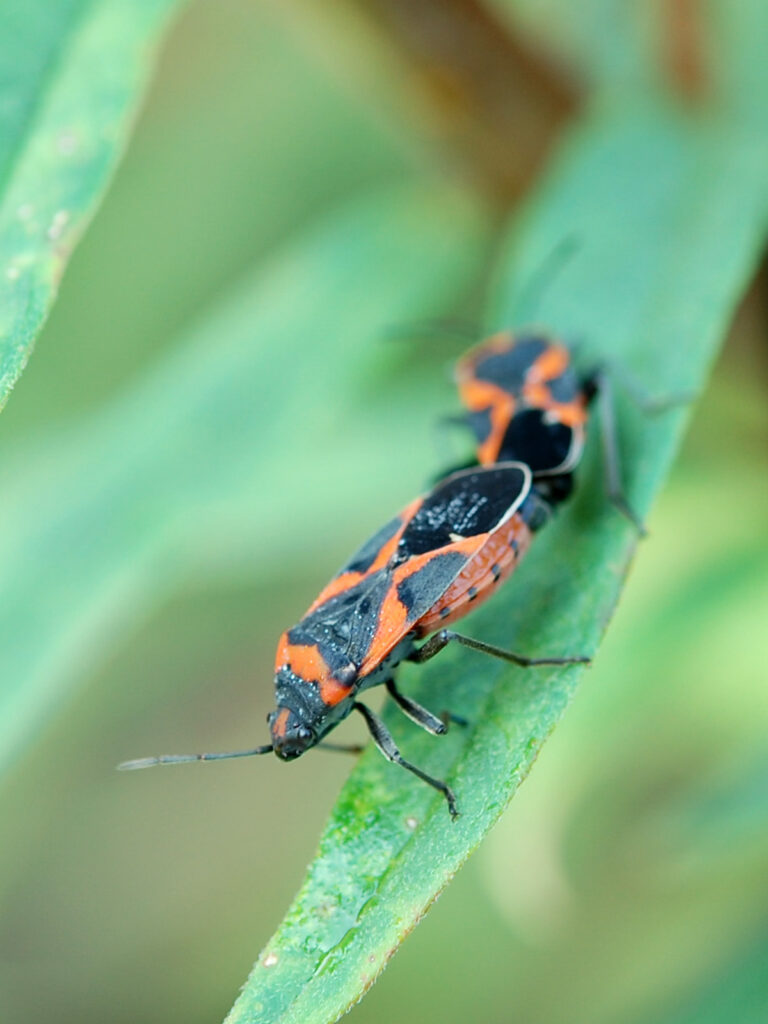
This is a true bug, in the scientific sense, but also in the annoying sense. It not only is a milkweed herbivore, but it also is a predator of the caterpillars and chrysalides.
To top it off, its favorite food is milkweed seeds! We have quite a few in our yard, and they seem to mate frequently. (Read more…)
Black broad-headed bug (Alydus eurinos)
This was identified by BugGuide.net. It was enjoying the goldenrod nectar — or was it just looking for little insects? I don’t know much about these, but they were interesting to watch.
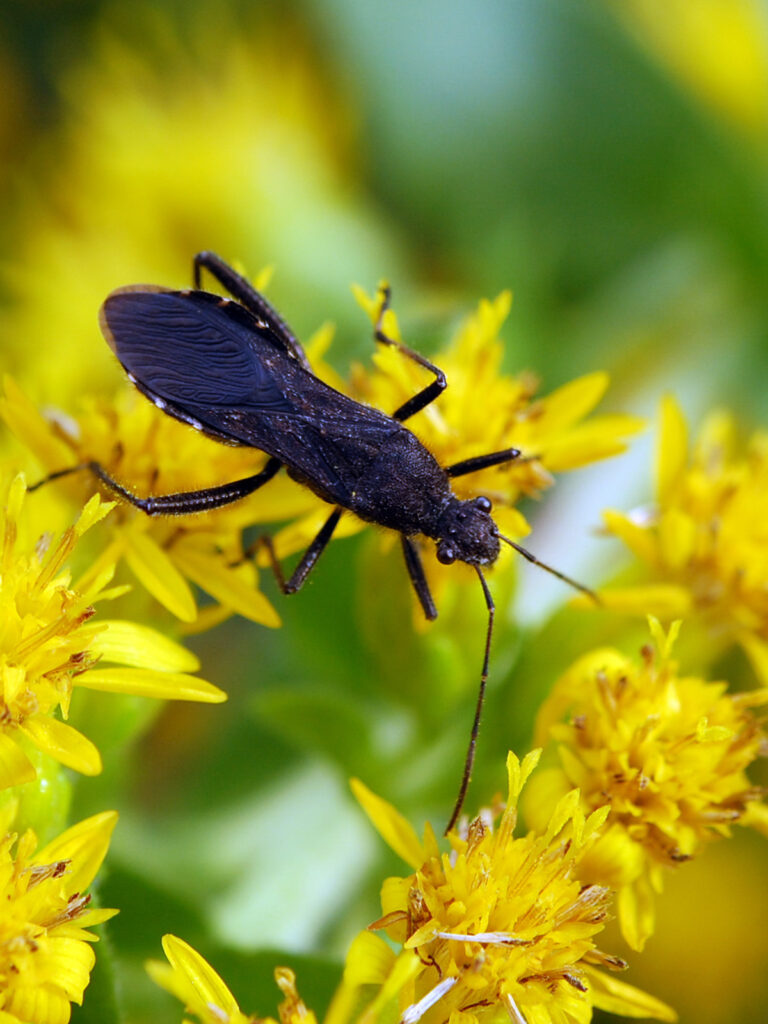
Green stinkbug (nymph) (Chinavia hilaris)
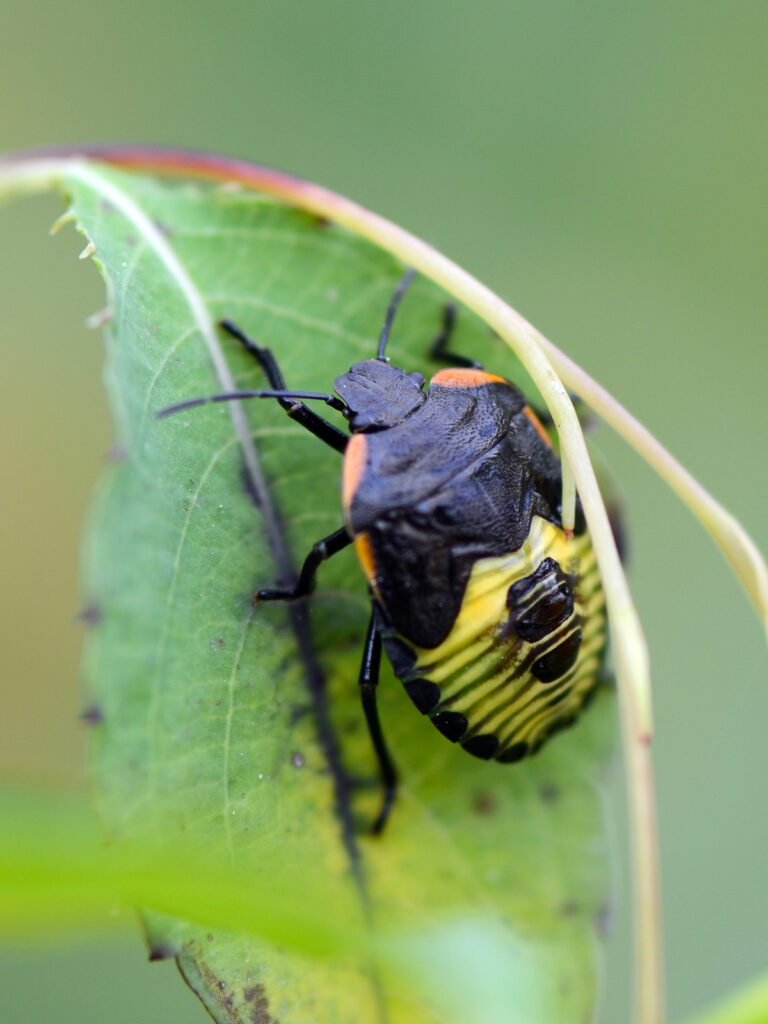
Stinkbugs can be agricultural pests. It could have been eating our edible garden plants all summer, but I didn’t notice. Still, an intriguing looking insect.
Ambush bug (Phymata pennsylvanica) or P. americana?
This seems to have come in on some vegetables we had harvested since it showed up in our kitchen when we were washing the vegetables. Quite an intriguing insect! (I’m guessing it’s P. pennsylvanica, but BugGuide ID’d it only as Phymata.)
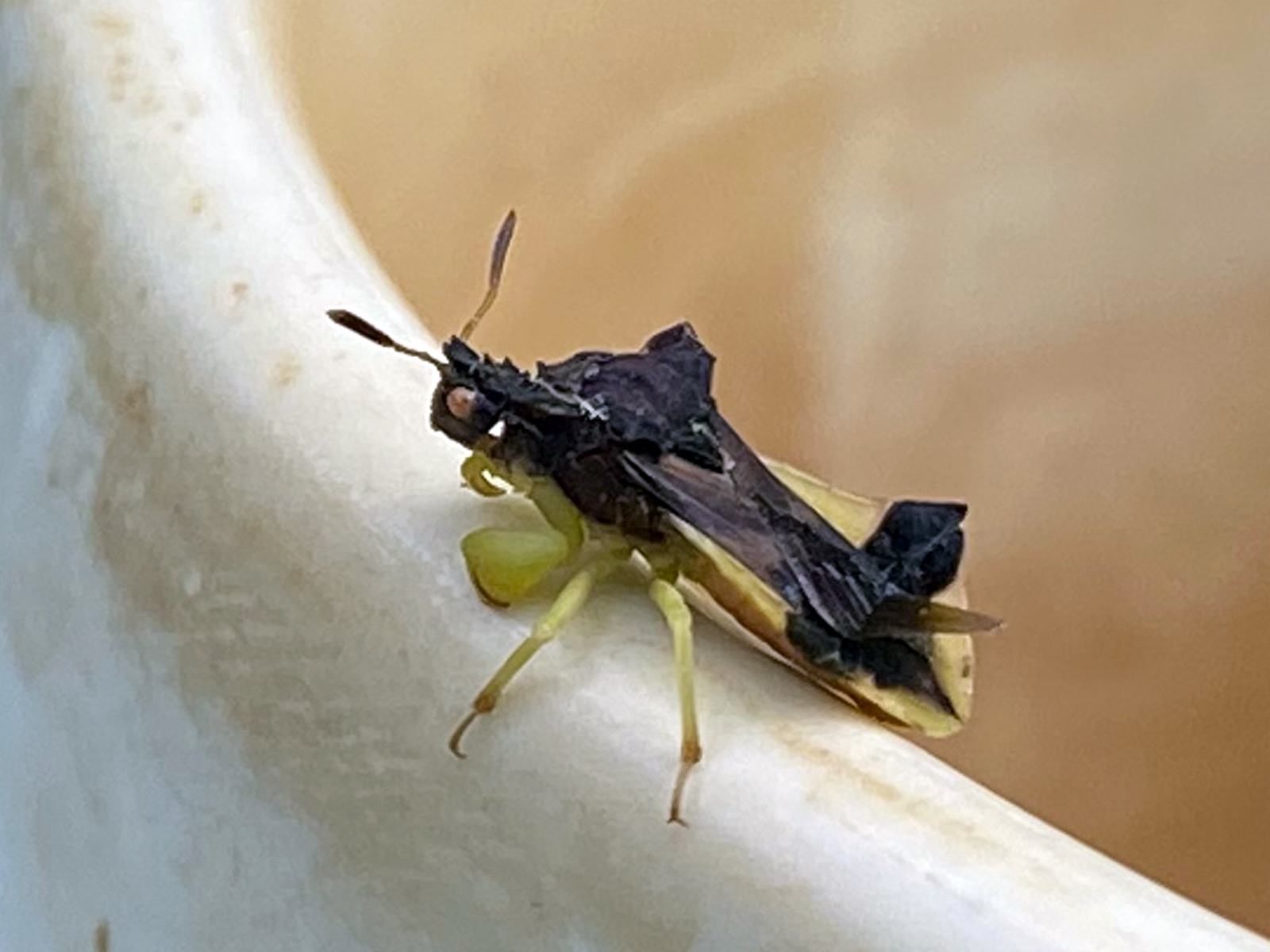
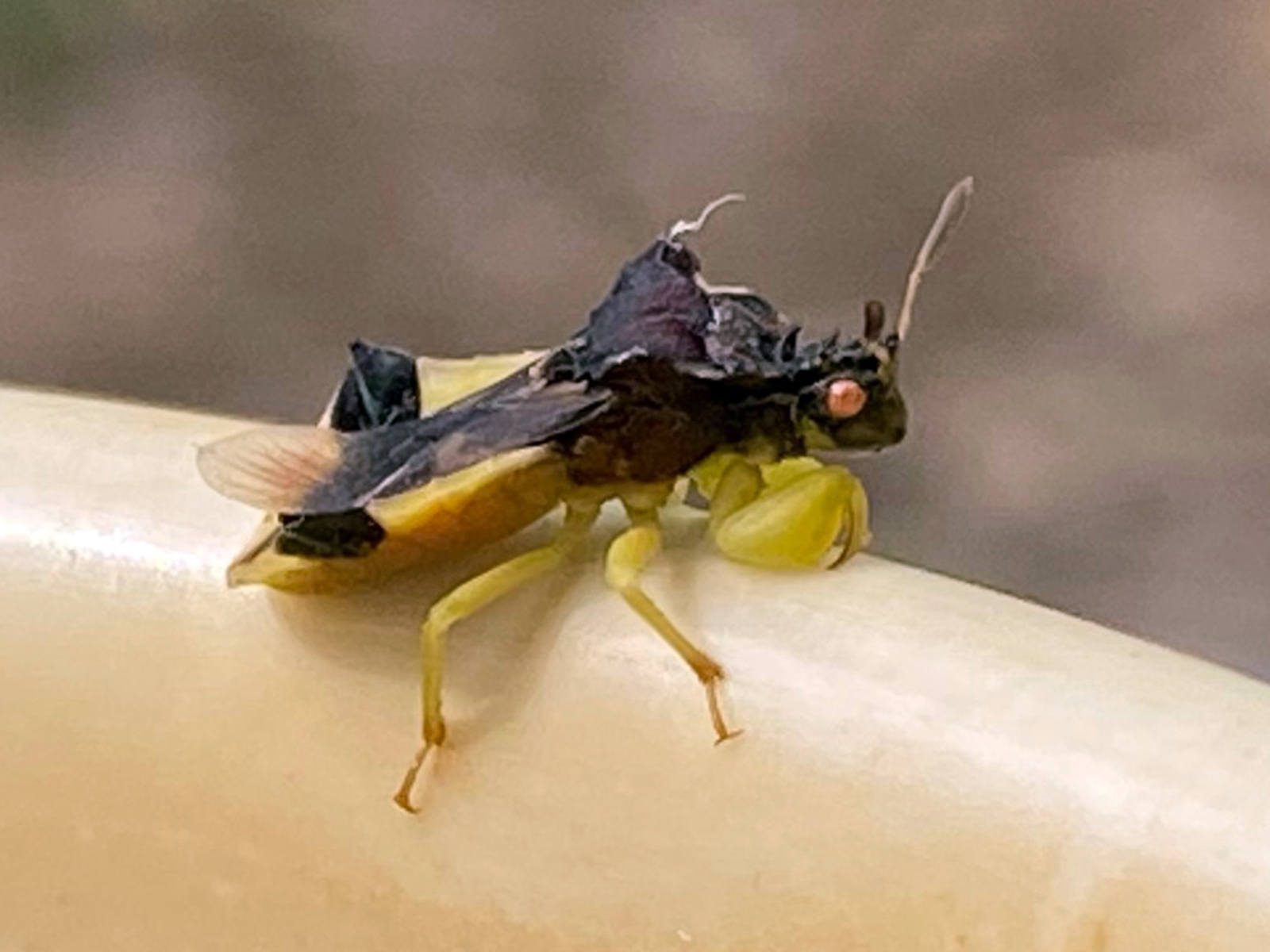
Some other insects (but not true bugs)
Common green lacewing (Chrysopa oculata)
I’ve noticed quite a few lacewing eggs on milkweed leaves, but I don’t often see the adults. Maybe I’m not looking hard enough; they’d be easy to miss. They’re considered a beneficial insect, especially since their larvae eat aphids.
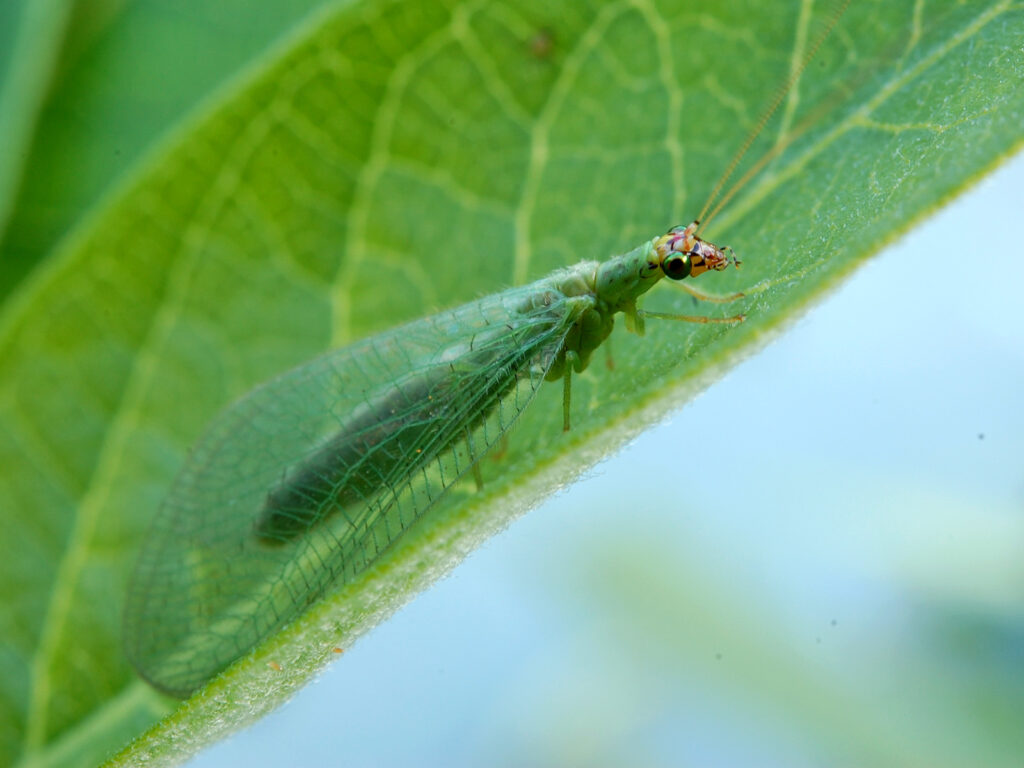
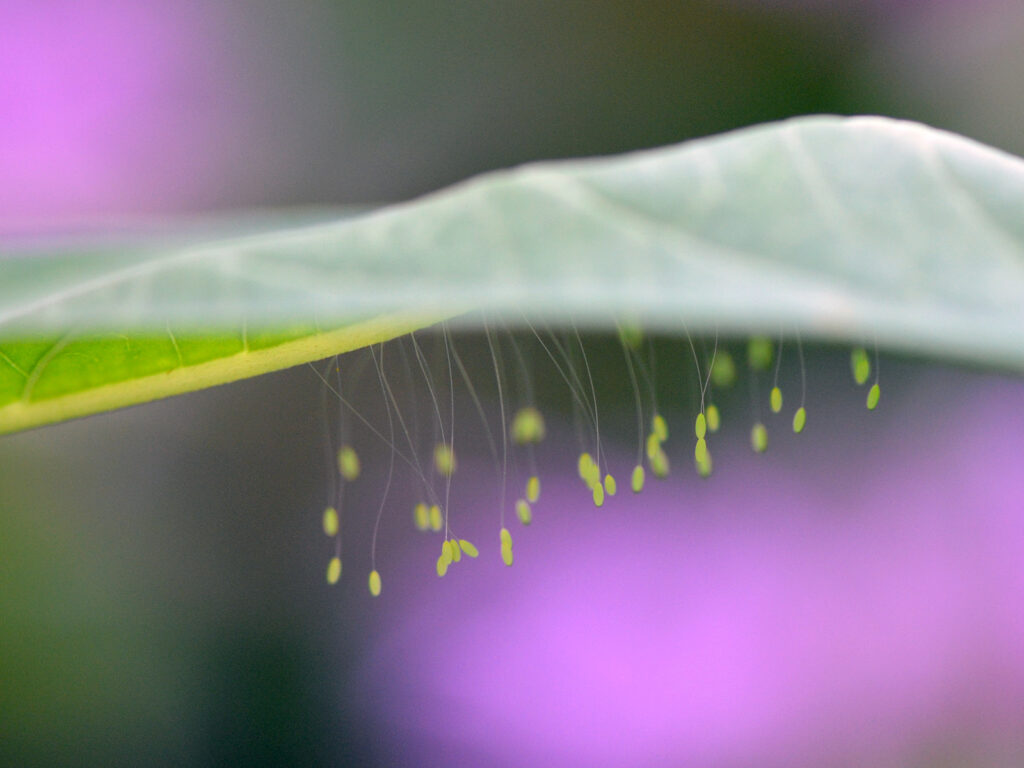
We often find lacewing eggs on our swamp milkweed.
It’s a little hard to see in the photo (I’ll try to get a better one next year), but each little white egg is attached to the end of a filament on the leaf, so they’re all “up in the air.”
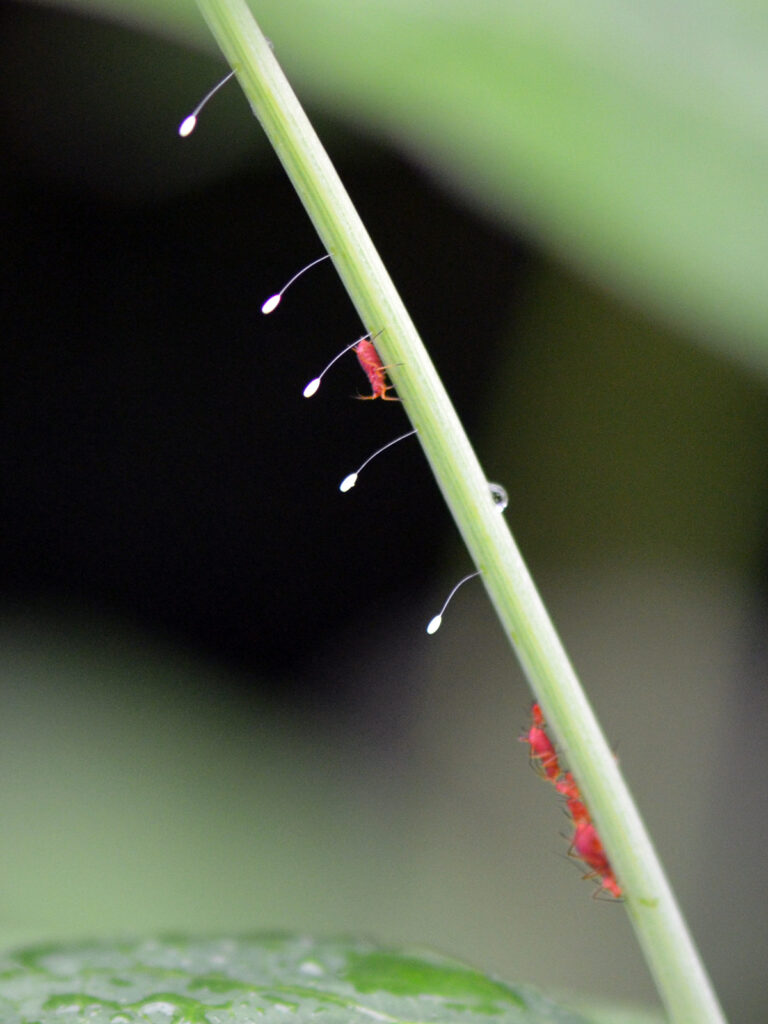
I’ve read that laying the eggs on filaments is helps prevent hatchlings from eating their siblings. Climbing down the filiament gives them a little time to “think it over” — but I’m unnecessarily anthropomorphizing …
Life in the Undergrowth by David Attenborough: The Lacewing is a 2-min. video showing how the lacewing lays her eggs. [The whole Attenborough series is highly recommended!]
The lacewing mother has thoughtfully placed these eggs near a good food source — aphids! — for the lacewing larvae.
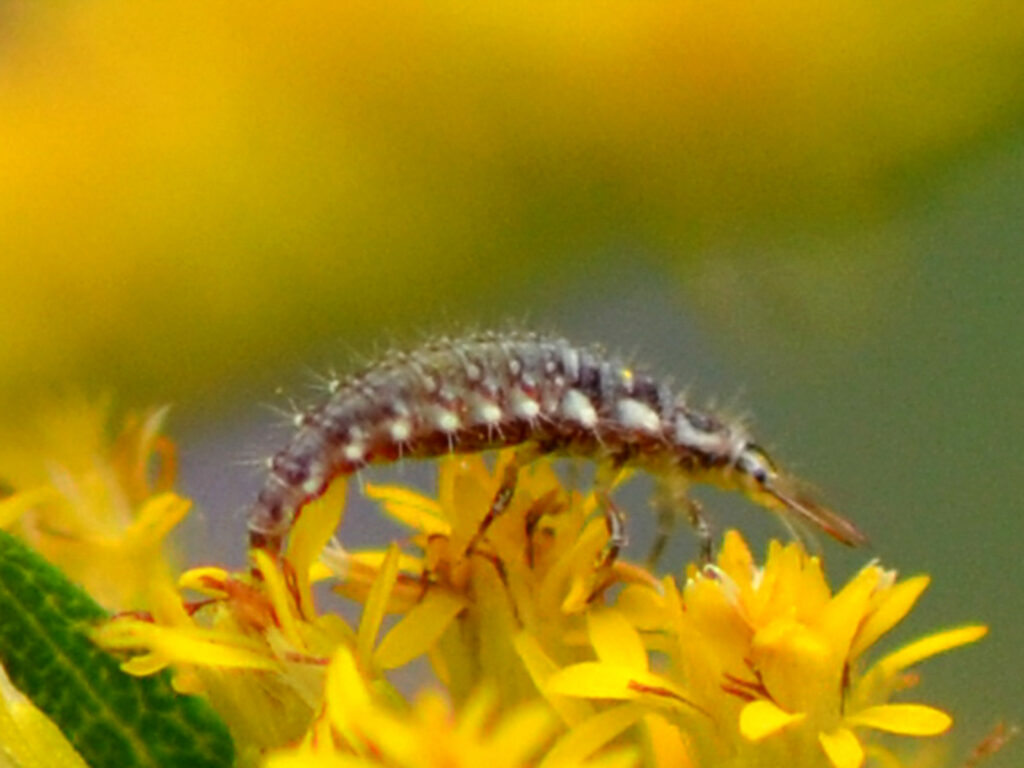
I noticed this strange-looking creature in the background of a photo I had taken of a potter wasp nectaring on a goldenrod.
I submitted it to BugGuide.net and discovered it was a lacewing larva!
Water strider (exact species not yet identified)
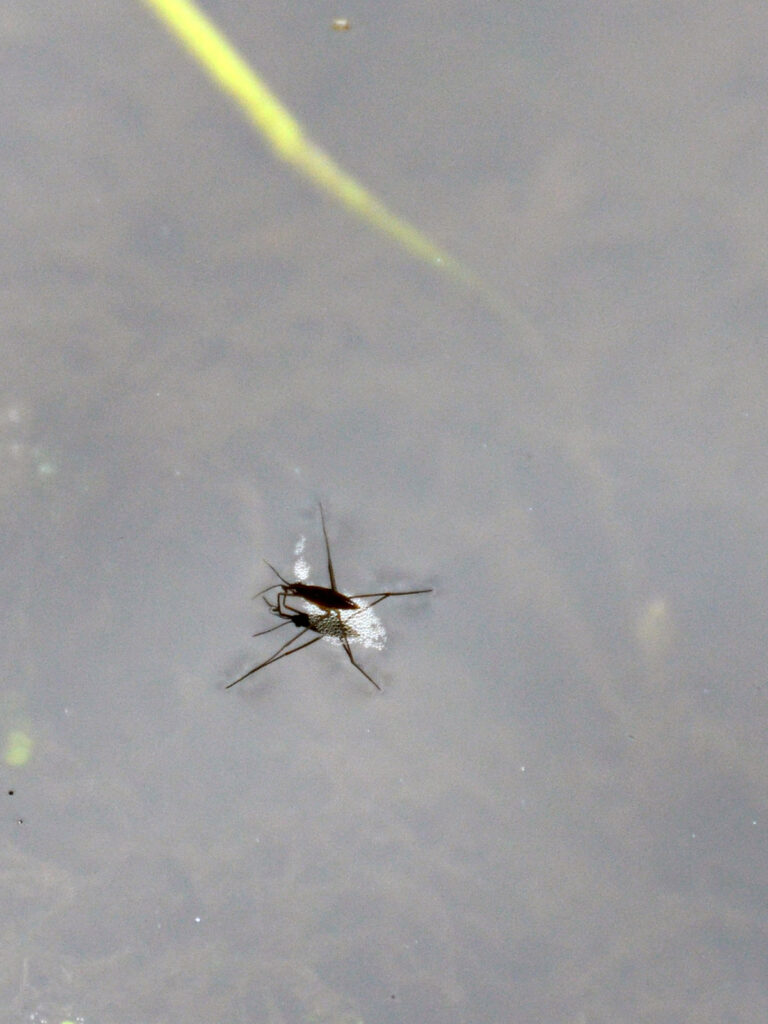
One of the most exciting things when we first created our pond was discovering a new kinds of bugs, like the ones that walk or row on the water, such as the water boatman.
It’s amazing to see how this insect rests upon the water.
